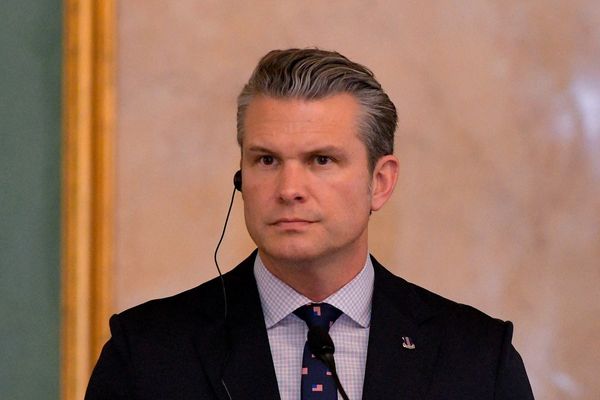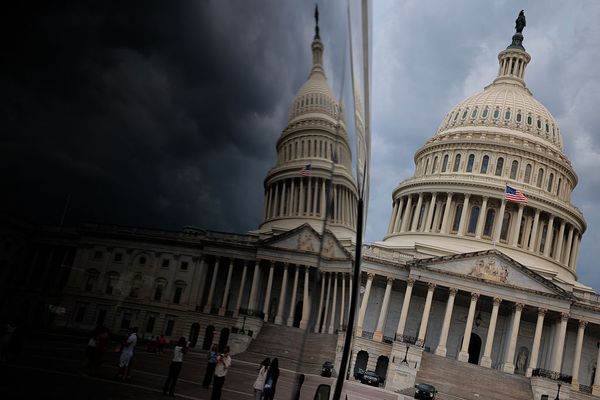The 2025 federal election resulted in some unexpected outcomes, including the loss by the Greens Leader, Adam Bandt, of his seat in the House of Representatives. The new Greens leader is Senator Larissa Waters.
Does it matter that a party leader sits in the Senate, and why do the leaders of major parties almost always come from the lower House?
The answer is that by convention, rather than an express constitutional requirement, the prime minister sits in the lower house of parliament. Parties with aspirations to form government therefore choose leaders from among their members in the lower house.
Prime ministers in the House of Lords
Historically, in the United Kingdom, prime ministers could sit in either house. In the 19th century, most prime ministers sat in the House of Lords, and two started in the House of Commons and ended their prime ministership in the Lords.
But in the 20th century, the convention developed of the prime minister holding a seat in the House of Commons.
This was for three reasons. First, as a matter of practicality, the House of Commons is where the main work of government occurs, and the prime minister’s involvement is needed.
Second, according to convention, the monarch appoints as prime minister the person who commands the confidence of the lower house, which is hard to do from outside it.
Third, the House of Lords is not elected, and therefore does not have a democratic mandate. It ceased to be acceptable in the United Kingdom for an unelected person to govern as prime minister.
When the Conservative prime minister, Harold Macmillan, resigned suddenly for health reasons in 1963, Lord Home was appointed as Conservative Party leader and prime minister. He renounced his earldom and then ran successfully in a byelection for a seat in the House of Commons.
A prime minister in the Senate?
In Australia, the position is different because the Senate is elected by the people. A senator can therefore be regarded as having a democratic mandate, although he or she represents a state, rather than being elected by a particular electorate.
Section 64 of the Commonwealth Constitution requires ministers to be either a member of the House of Representatives or the Senate, with a three month leeway period to become elected. But it does not require that the prime minister sit in the House of Representatives. It is instead a matter of custom, practicality and convention.
When the prime minister, Harold Holt, went missing while swimming in the ocean in December 1967, the Liberal Party chose Senator John Gorton as its new leader.
Gorton was appointed prime minister on January 10 1968, despite being a Senator, but resigned from the Senate on February 1 1968 and was elected to fill the vacancy in Holt’s lower House seat on February 24.
Gorton was therefore prime minister while being a Senator for three weeks, and prime minister without a seat in parliament at all for just over three weeks. It was generally accepted that as prime minister, he should sit in the lower house.
Premiers in state upper houses
At the state level, premiers have sometimes sat in the upper house, at least for a short period.
One notable example is that of Hal Colebatch in Western Australia. In 1919, Colebatch, who was a member of the Western Australian Legislative Council, was acting premier, while the premier, Henry Lefroy, was at a conference in Melbourne. There was an outbreak of Spanish flu in the eastern states. In scenes reminiscent of the COVID pandemic, Colebatch gained immense popularity by slamming shut the state border. His own premier was even prevented from returning home.
Lefroy eventually resigned as premier, and Colebatch replaced him, despite sitting in the Legislative Council. But Colebatch did not last long in the job. He tried, but failed, to find a lower house seat to move to. In addition, his health was failing, as was his popularity after rioting during a wharf strike led to the death of a worker. So Colebatch resigned as premier, having spent his entire premiership as a member of the Legislative Council.
In New South Wales, when the Labor premier, Neville Wran, surprised his colleagues by resigning in May 1986, the party elected Barrie Unsworth as its leader.
Unsworth was a member of the Legislative Council. He was nonetheless appointed as premier. A Labor backbencher in the Legislative Assembly resigned to allow Unsworth to contest his safe Labor seat. Despite a large swing against him, Unsworth narrowly won the seat by 54 votes and continued as premier until 1988.
Leaders of major and minor parties
The main problem with a prime minister or premier sitting in the upper house is that the government is formed from the lower house, and the prime minister or Premier must be the person who holds its confidence. This is difficult when there is no direct accountability to the lower house, as it cannot question a prime minister or premier who sits in the other house.
For this reason, parties that could potentially win government will ordinarily choose a leader from among their members in the lower House, and politicians with leadership ambition will often seek to transfer from the upper to the lower house to enhance their chances to lead.
Due to the Senate’s proportional voting system, minor parties are more likely to have greater numbers in the Senate than the House of Representatives. It is therefore logical that their leadership should come from the Senate, especially when they are unlikely to have the numbers in the lower House to form a government. But for major parties, their leader is ordinarily chosen from among the members of the House of Representatives, in case government beckons.
Anne Twomey has received funding from the ARC and sometimes does consultancy work for Parliaments, governments and inter-governmental bodies.
This article was originally published on The Conversation. Read the original article.







